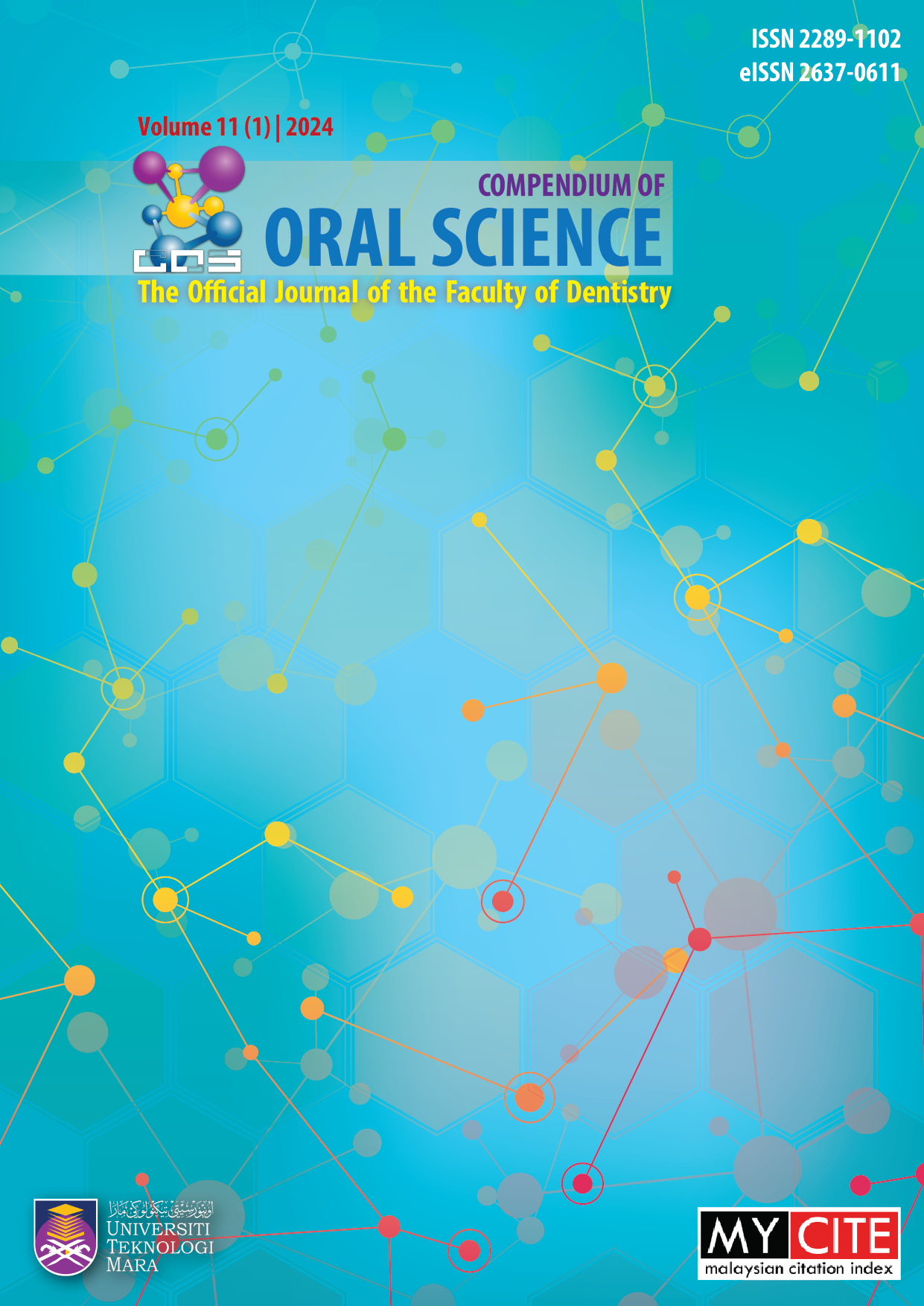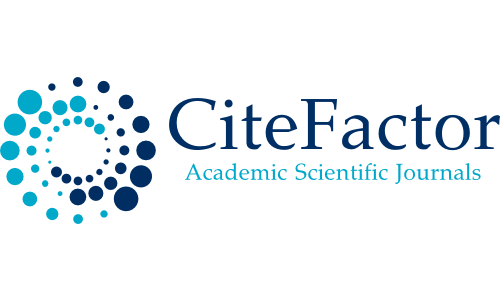Perception of Behaviour Management Techniques for Paediatric Patients among Dental Officers
DOI:
https://doi.org/10.24191/cos.v11i1.26033Keywords:
behaviour management, dental officers, Malaysia, paediatricAbstract
Introduction: Dental anxiety can be effectively managed by applying pharmacological and non-pharmacological behavioural management therapy approaches (BMT). This study investigated the dental officers’ perception of behaviour management techniques practiced in managing paediatric dental patients in primary dental clinics. Materials and methods: A quantitative study using structured online English questionnaires among dental officers serving in primary dental care services under the Ministry of Health Malaysia (MOH Malaysia) in Sabah. The acceptability of applied behaviour management techniques was measured using Likert scale from 0 to 10. Data was analysed using SPSS version 29 and descriptive data was presented. Results: Seventy-four dental officers involved in this study (Male= 14, Female= 60). Positive verbal reinforcement, tell-show-do, and offering an exact explanation of what the findings indicate are the most widely accepted behaviour management strategies (BMT), with mean scores of 9.5, 9.1, and 8.7, respectively. The least accepted BMT among dental officers in Sabah are immobilisation with a papoose board, preventing the child from speaking during treatment, and hand over mouth (HOM), with mean scores of 4.6, 3.6, and 3.2, respectively. Conclusion: The study concludes that the most recognized BMT is positive reinforcement technique regardless of age, experience and gender. This finding provides information in the development of modules for continuous professional development training among dental officers in the Ministry of Health Malaysia.
Downloads
Published
How to Cite
Issue
Section
License
Copyright (c) 2024 Compendium of Oral Science

This work is licensed under a Creative Commons Attribution-NonCommercial 4.0 International License.
Materials contained in the journal may be reproduced for educational purposes provided that both the author(s) and the journal are appropriately recognised; otherwise duplication is not permitted. No articles, reports, or portions there of may be translated into other languages, published in books, journals, magazines, or any other print form without written permission from the authors and from the journal.
Disclaimer: The statements, opinions and data expressed in the articles and reports herein are those of the author(s) and not of the publisher and the editor(s). The publisher and the editor(s) disclaim responsibility for any injury to persons or property resulting from any schemes, methods, instructions or ideas referred to in the content.















